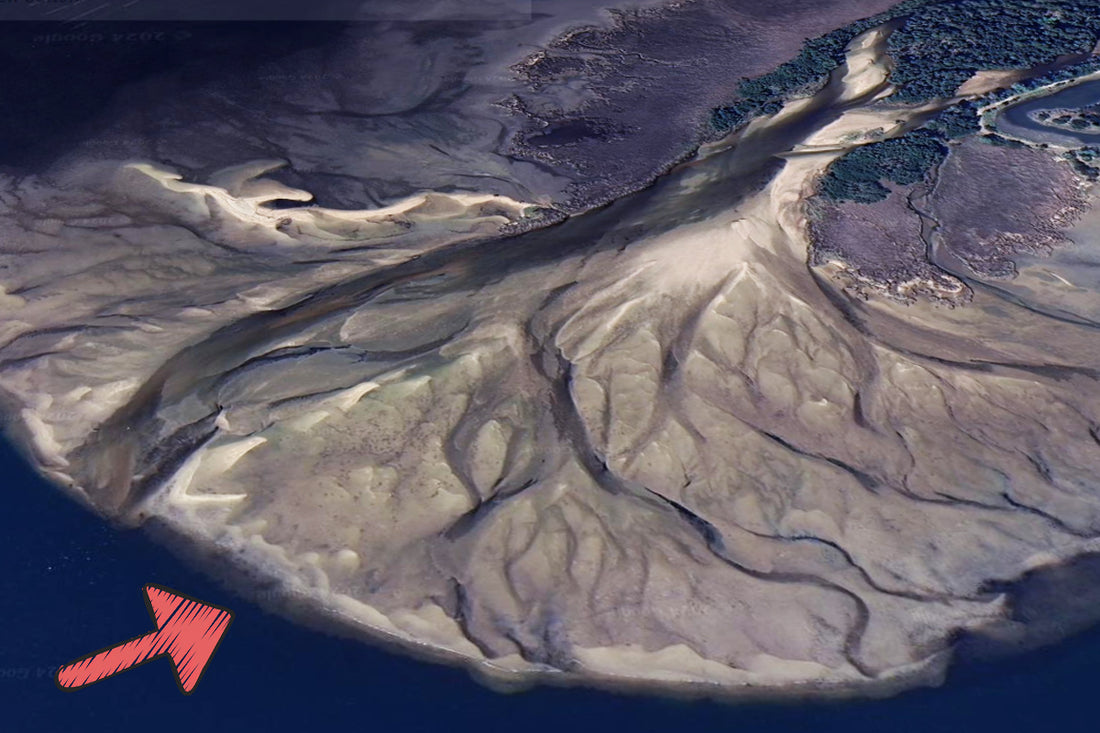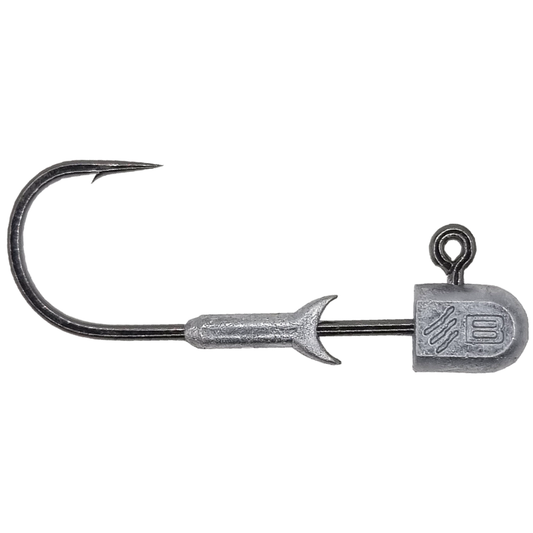
Grub Fishing For Bream On The Flats
Share
Fishing with grub lures on mud or sand flats can be an incredibly productive way to catch bream. These areas, characterized by shallow waters, soft substrates, and ample natural food sources, create an ideal feeding ground for bream, especially during high tides. Grub lures, known for their natural movement and effectiveness in these environments, are a popular choice for anglers targeting bream on these flats. Here’s a comprehensive guide on how to fish with grub lures for bream on mud and sand flats, covering everything from selecting the right lure to essential techniques for success.
Why Bream Love Mud and Sand Flats
Bream are opportunistic feeders, and mud and sand flats provide a rich feeding ground for them. These areas are home to a variety of invertebrates, crustaceans, worms, and small fish that bream feed on, making them a popular hunting ground. When the tide rises and covers these flats, bream move into the shallows to scavenge for food along the soft, nutrient-rich substrate. The flats offer them easy access to prey that would otherwise be hidden in the mud or sand.
Fishing in these areas can be particularly productive because bream in shallow waters are actively hunting and are more likely to strike a well-presented grub lure. They are accustomed to seeing small creatures in these areas and are naturally inclined to investigate anything that resembles food.
Why Use Grub Lures for Bream?
Grub lures are soft plastic baits with a small, rounded body and a curved, wriggling tail that resembles a worm or small invertebrate. They are ideal for targeting bream because they mimic the movement and appearance of natural prey found on mud and sand flats. The flexible, soft plastic body of a grub lure is appealing to bream, as it feels like real prey when they bite, encouraging them to hold on longer and giving anglers a better chance to set the hook.
The tail of a grub lure is its most distinctive feature, creating an enticing movement as it is retrieved through the water. This action closely mimics the undulating motion of a worm or small crustacean, making it particularly effective for enticing bream. Grub lures come in various colours, and when fishing on mud or sand flats, natural tones like brown, green, and bloodworm often work best, as they blend well with the environment while standing out just enough to catch a bream’s attention.
Choosing the Right Grub Lure for Mud and Sand Flats
When selecting a grub lure for bream on mud or sand flats, consider the following factors:
-
Color: Colours that mimic natural prey are often the most effective. Bloodworm, motor oil, and pumpkinseed are popular choices for estuary fishing because they resemble the natural colours of worms, crustaceans, and other invertebrates. If the water is particularly murky, brighter colours like chartreuse or white may help improve visibility.
-
Size: Bream are cautious feeders and often prefer smaller lures that match the size of their usual prey. A grub lure between 2 to 3 inches is usually ideal for bream on mud or sand flats. Smaller lures are also more subtle, which can be crucial when fishing for wary bream in shallow waters.
-
Weight: A lightweight jig head is often best for mud and sand flats, as it allows the lure to sink slowly and stay near the bottom where bream are feeding. Depending on the depth of the water and current strength, weights between 1/16 and 1/8 ounce work well. This lighter weight lets the lure move naturally with the tide and current, making it appear more like a small creature drifting along the bottom.
Techniques for Fishing Grub Lures on Mud and Sand Flats
Fishing with grub lures on mud and sand flats requires finesse and an understanding of how bream behave in these shallow environments. Here are some effective techniques to increase your success:
-
Slow Roll: The slow roll is a straightforward and effective technique for fishing grub lures on flats. Cast the lure out and let it sink close to the bottom, then slowly reel it in at a steady pace. The slow roll allows the tail of the grub to create a steady, lifelike wriggle, which can be irresistible to bream. This technique is particularly useful when the fish are spread out and actively moving around the flats, as it covers more ground.
-
Lift and Drop: Another effective technique is the lift-and-drop method, which involves lifting the rod tip to make the lure rise and then allowing it to fall back to the bottom. Bream are naturally curious, and this technique mimics the motion of a small creature darting away and then settling, which can trigger a feeding response. Allow the lure to pause briefly on the bottom between lifts to give bream time to inspect and strike.
-
Twitch and Pause: For a more erratic action, try the twitch-and-pause method. This involves small, quick twitches of the rod tip to make the lure dart erratically, followed by a pause to let it sink. The sudden, unpredictable movement can attract attention from bream, while the pause allows the lure to settle naturally. This technique works well when bream are feeding heavily on small prey and are more aggressive.
-
Sight Casting: On mud and sand flats, it’s often possible to see bream moving through the shallow water. If you spot a bream, cast your grub lure slightly ahead of its path and use a slow roll or lift-and-drop retrieve to catch its attention. Sight casting is particularly effective on calm days when the water is clear, and it adds an exciting visual element to your fishing.
Understanding Tides and Conditions
Tides play a significant role when fishing for bream on mud and sand flats. Bream generally move onto the flats to feed during high tide or on a rising tide, when the water covers the mud and sand, making it easier for them to access food. The rising tide pushes small prey into the shallows, which bream eagerly hunt. As the tide recedes, bream often move back to deeper water, so timing your fishing to align with the tidal movements can significantly increase your chances.
Early morning and late afternoon are prime times for targeting bream on the flats, as they are more likely to feed actively during these cooler periods. Additionally, overcast or cloudy days can also work in your favor, as fish are less wary in low-light conditions.
Gear Recommendations for Grub Lure Fishing
When fishing with grub lures for bream, light to medium-light gear is ideal:
-
Rod: A 6’6” to 7’ light or ultra-light rod with a fast action will give you the sensitivity needed to detect subtle bites while providing enough strength to handle a larger fish if needed.
-
Reel: A small spinning reel (1000-2500 size) is perfect for this setup, as it is lightweight and well-suited for casting lighter lures.
-
Line: Light line (4-8 lb braid or fluorocarbon) is recommended, as it allows for a stealthy approach in clear water and provides the finesse needed for precise casting.
-
Leader: A fluorocarbon leader (4-6 lb) is ideal, as it is virtually invisible underwater and abrasion-resistant, which is beneficial when fishing in areas with rocky or sandy terrain.
Final Tips for Success
When fishing for bream on mud and sand flats, patience is key. Bream can be cautious, so work your lure slowly and take your time exploring the area. Experiment with different retrieval techniques, and pay attention to what works best in specific conditions. Bream are quick to notice unnatural movements, so strive for a natural, subtle presentation.
Using a grub lure on mud and sand flats can be an incredibly rewarding way to fish for bream. By understanding the bream’s behavior, selecting the right lure, and using effective retrieval techniques, you can maximize your success and enjoy productive fishing sessions on the flats. The natural appeal of grub lures, combined with the right conditions and approach, will give you a consistent edge in catching these prized estuary fish.







